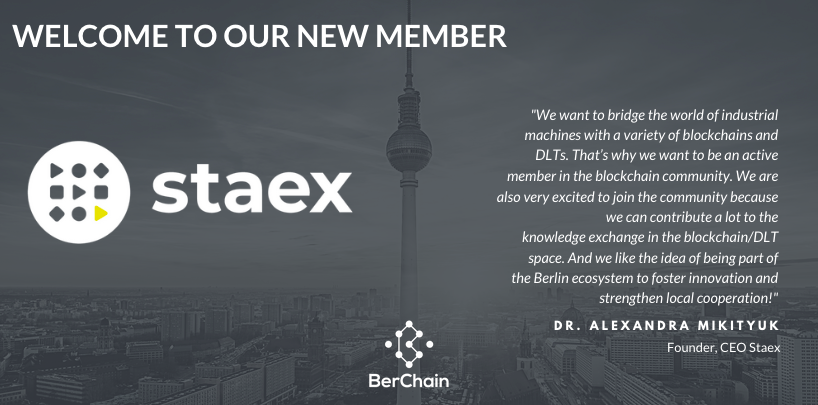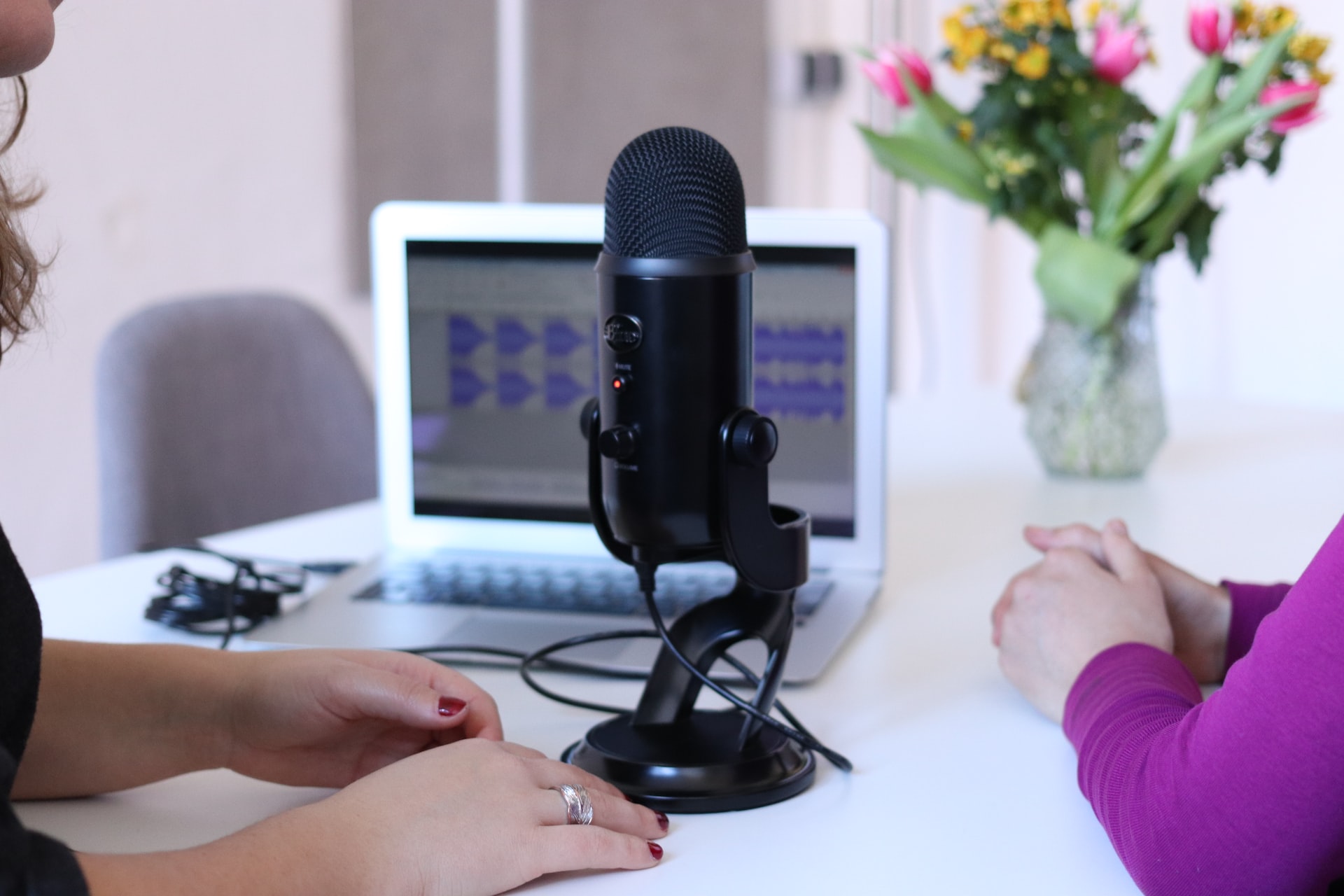
Interview with our new member Staex

- Hi Alexandra, on behalf of BerChain, we are glad to have you onboard! What is the work you bring forward with Staex?
Thank you! We are also very happy to become a member of the BerChain community. Talking about Staex, our vision is a zero-waste digital economy. And we think that it can only be achieved through very secure, resource-efficient and easily scalable IT infrastructure that can support millions of devices and machines in the future. This exact infrastructure has been created at Staex. We enable so-called Swarm Clouds that have a very simple interface, through which our customers can easily connect to any blockchain or DLT protocol they want. We have developed a unique technical stack that combines the power of Clouds, distributed technologies and secure networking. It bridges data silos between departments, companies and business verticals. This is what our future infrastructure for machines should be able to do.
- Why did you join BerChain?
We want to bridge the world of industrial machines with a variety of blockchains and DLTs. That’s why we want to be an active member in the blockchain community. We are also very excited to join the community because we can contribute a lot to the knowledge exchange in the blockchain/DLT space. And we like the idea of being part of the Berlin ecosystem to foster innovation and strengthen local cooperation!
- In your opinion, what are the biggest obstacles to widespread mainstream adoption of blockchain and Distributed Ledger Technologies (DLT) and what can be done to overcome these obstacles?
We think the biggest obstacles are the integration of blockchains/DLTs into existing Enterprise systems and their distributed management. When we say this, we do not mean a centrally hosted blockchain, we mean a real node distribution that has to be achieved to create highly secure systems on top. From our experience, companies encounter highly heterogeneous IT landscapes while setting up blockchains or DLTs that are managed by multiple parties. There are also no efficient tools for how they can manage those setups. Those are the challenges that we are addressing by Staex. We are very passionate about bridging the gap between those two worlds to foster the widespread mainstream adoption of blockchain and DLTs.
- Where do you see the Blockchain industry in 10 years?
Blockchains will become an integral part of our IT infrastructure. We will have a more resilient, flexible, secure and scalable Internet. Blockchain is an amazing piece of software that I fell in love with 7 years ago. It combines properties like secure identification, verification, storage, transaction processing, distributed computing, distributed management or governance, secure networking and immutability. All of this put together into a beautiful concept of a blockchain. I still have shivers when I think of it (laughs). All this will massively change how our systems work today. I think it’s even hard to comprehend which services and applications will be enabled through such an elegant piece of infrastructure.
- What are your latest projects in the space as Staex?
We are very excited to help our customers to build smart Smart City infrastructures. Smart Cities today are very complex, heterogeneous and distributed systems. It takes companies a huge amount of time and effort to speed up service enrollment in such a context, where multiple companies out of public and private sectors are involved. With Swarm Clouds from Staex companies can solve those challenges easily. We abstract the complexity by simplifying the integrations, and they can focus on the development of cool customer features instead of being dragged into years of complex infrastructural work.
- What do you find exciting about the Berlin Blockchain Ecosystem?
I am a huge fan of our Berlin ecosystem. I love the free spirit, the willingness to share ideas, to collaborate, and openness in elaborations of greater visions that every member of the ecosystem has. And the great support: we all know that we have big goals in front of us, thus we support each other and very openly work together towards those big goals. I also love the infrastructural touch of it. In the very beginning, Berlin attracted a lot of blockchain or DLT startups that were working on protocols itself. In the early days I really enjoyed being in the space with core developers of Bitcoin, Ethereum, IOTA and also many other great protocols, learning a lot about the technology and collaboratively working on the Staex vision. And it is all highly accessible in Berlin.





